
OfferLab: Your First $100 Without a Website
OfferLab lets you start fast with the tools you already have. You join free, pick a solid offer, and share your link on social or a tiny newsletter. The dashboard stays simple so you can see what every click earns. You’ll track EPC against your cost and double down on what works.
Friend to friend: a few links are affiliate links. When you purchase, I might get a tiny thank-you from the company, with zero added cost to you. I only recommend things that I’ve actually tried and looked into. Nothing here is financial advice; it is for entertainment. Read the full affiliate disclosure and privacy policy.
Make your first $100 in a weekend with $0 tools. Join OfferLab free, promote an offer without a website, and track EPC ≥ CPC so every click counts. Simple steps, faster proof.
OfferLab keeps the mechanics simple: free to join, per-sale fees listed upfront, and a 30-day clearing window before affiliate withdrawals.
Sellers get instant Stripe payouts; affiliates withdraw after commissions clear. That removes setup friction so you can focus on traffic and offer–audience fit.
You don’t need a website to begin. Start on channels you already use—short-form video, social posts, or a tiny newsletter—then add a site later for authority and SEO.
Place trackable links, disclose clearly, and iterate from the clicks you earn. – Shopify
To judge progress, use EPC—the dollars you earn per click. Pair EPC with your traffic cost (CPC) and a realistic starter conversion rate to decide what to scale.
If EPC meets or beats CPC, you’re on track; a simple worksheet keeps you honest and motivated. Always verify current OfferLab fees and payout policies at signup, as platforms evolve.
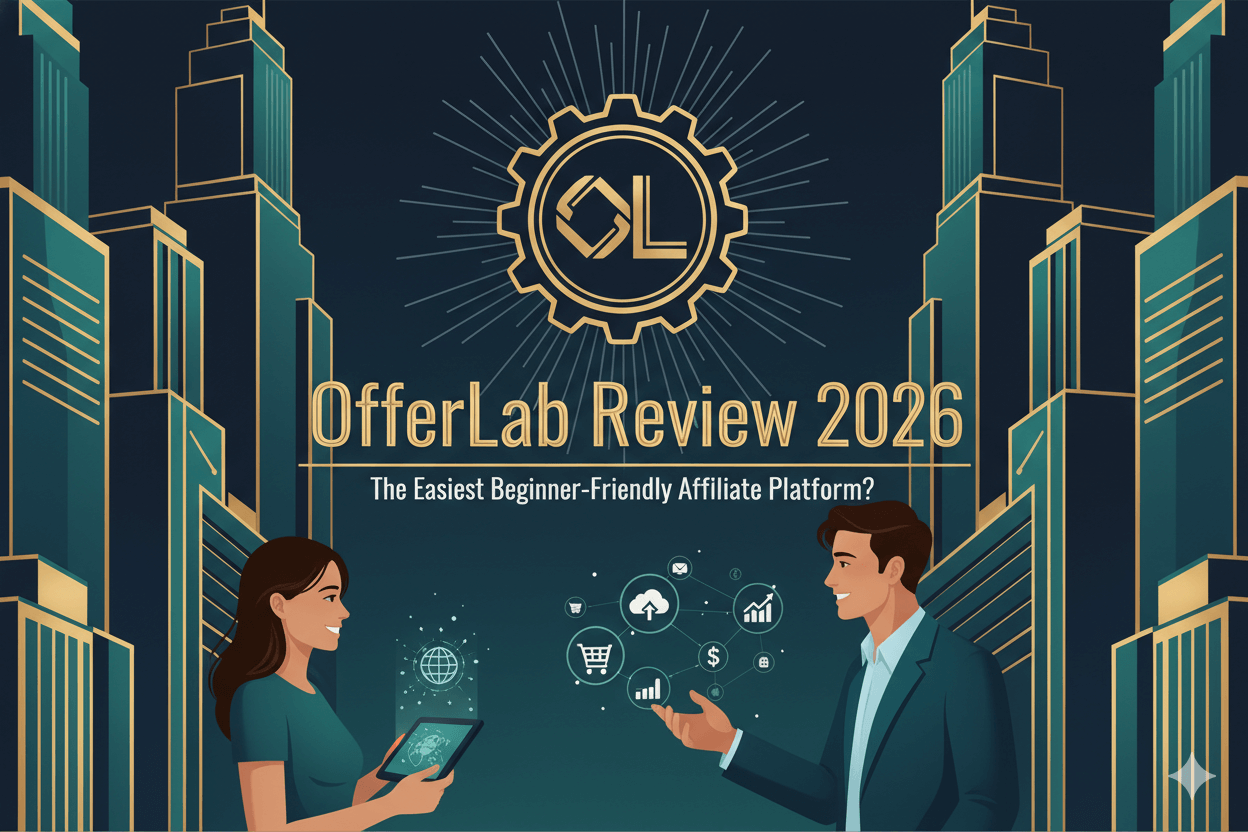
What OfferLab Is and How Beginners Earn
Know your costs up front: 7.5% + ~3.5%, 30-day clearing for affiliate commissions, instant Stripe for sellers.
Getting paid should feel simple and fair. OfferLab is built for that: a collaborative marketplace where sellers and promoters combine offers inside one checkout, split revenue automatically, and see payouts without extra tools.
You can join free, list an offer, or promote someone else’s—whatever gets you to your first clicks faster. ClickFunnels
Fees and who pays what
OfferLab charges per transaction, not per month. Every sale processed on the platform deducts 7.5% (platform) plus 3.5% (merchant processing), then any required sales tax.
There are no subscriptions or setup fees. This keeps costs tied to real revenue rather than time-on-platform.
For affiliates, withdrawal is on demand after funds clear. The FAQ lists $4.95 per payout for U.S. affiliates and $1.50 + FX for non-U.S., with the minimum simply covering the fee.
These are payout-processing costs, not extra platform cuts from your commission.
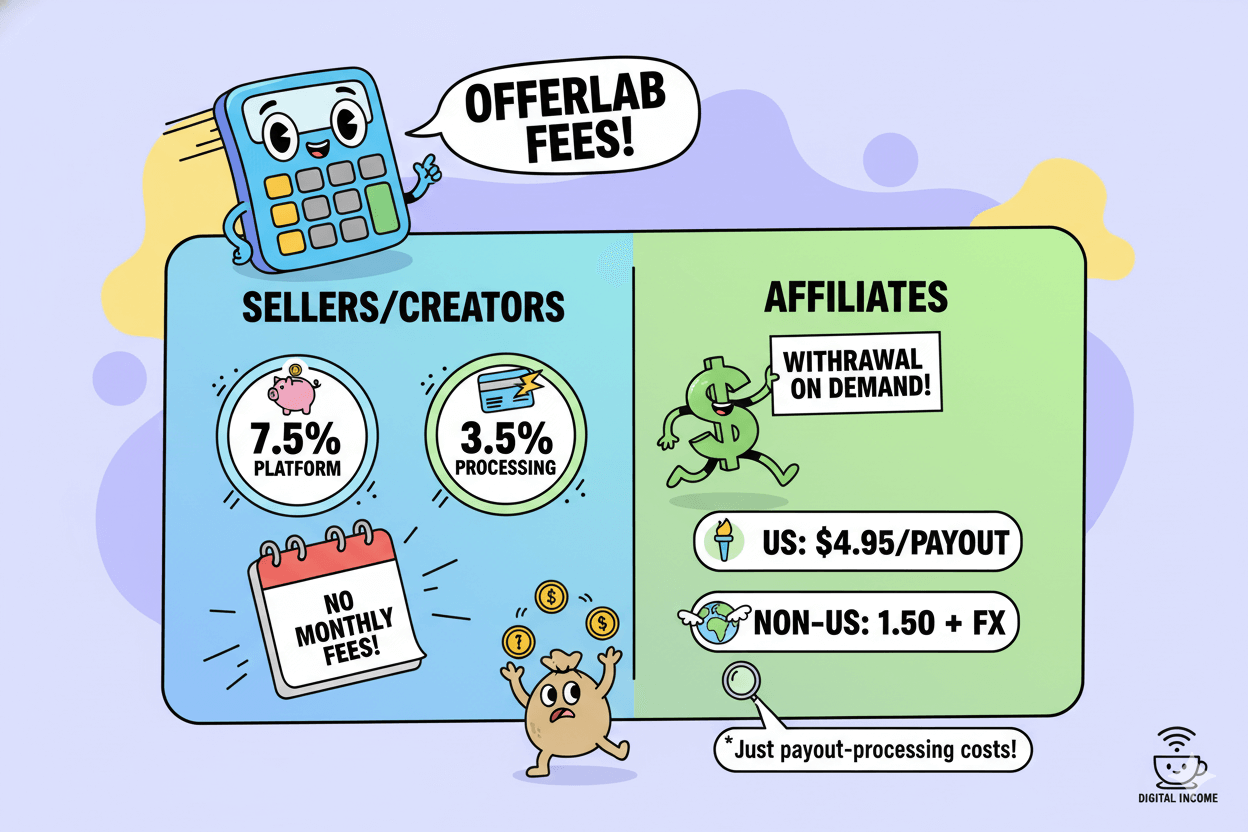
Payout timing and the 30-day hold
Two flows exist. Sellers receive instant Stripe payouts when they sell their own offers. Affiliates earn on other sellers’ offers; those commissions are held for 30 days to cover refunds or chargebacks, then become available to withdraw.
That 30-day clearing policy is spelled out in both the Help Center and the public FAQ.
This structure matters for cash planning. If you’re promoting offers daily, think in weekly cohorts: commissions earned this week unlock four weeks later.
Sellers, by contrast, can reinvest faster because their revenue settles immediately to their connected Stripe account.
Commissions, roles, and who sets the rate
You can earn in three ways: sell your own offer, promote others’ offers, or do both inside a “collab funnel.”
Commission rates are set by the offer owner and can range widely; payouts are automatically split at checkout based on those settings. This makes mixed funnels possible without manual spreadsheets or extra plugins.
Pro tip: Before you promote, confirm the offer’s commission percentage, refund policy, and any second-tier rewards shown in the Help Center.
Pair that with your EPC target so you know exactly what each click should be worth before you buy traffic or invest more time.
Make Your First $100 Without a Website
Start with $0 tools on channels you already use—social, shorts, or a tiny newsletter.
You can start where you already have attention. Short videos, simple posts, and a tiny email list move faster than a full website build.
The key is pairing clear disclosures with trackable links so every click teaches you what to do next. Start free, learn fast, then scale what works.
quick_win: Pick one offer and one channel. Publish three small assets in five days. Measure clicks, not likes.
Social + Shorts Sprint
Post three short videos that solve one tiny problem for your niche. Put your affiliate link in the profile and in each video’s description; pin a top comment when the platform allows.
On TikTok, best practice is to place links in the video description, first comment, and profile, and use a shortener to track CTR by post. Repeat the best-performing angle twice more to confirm the signal.
Always include a clear disclosure in the content and near the link.
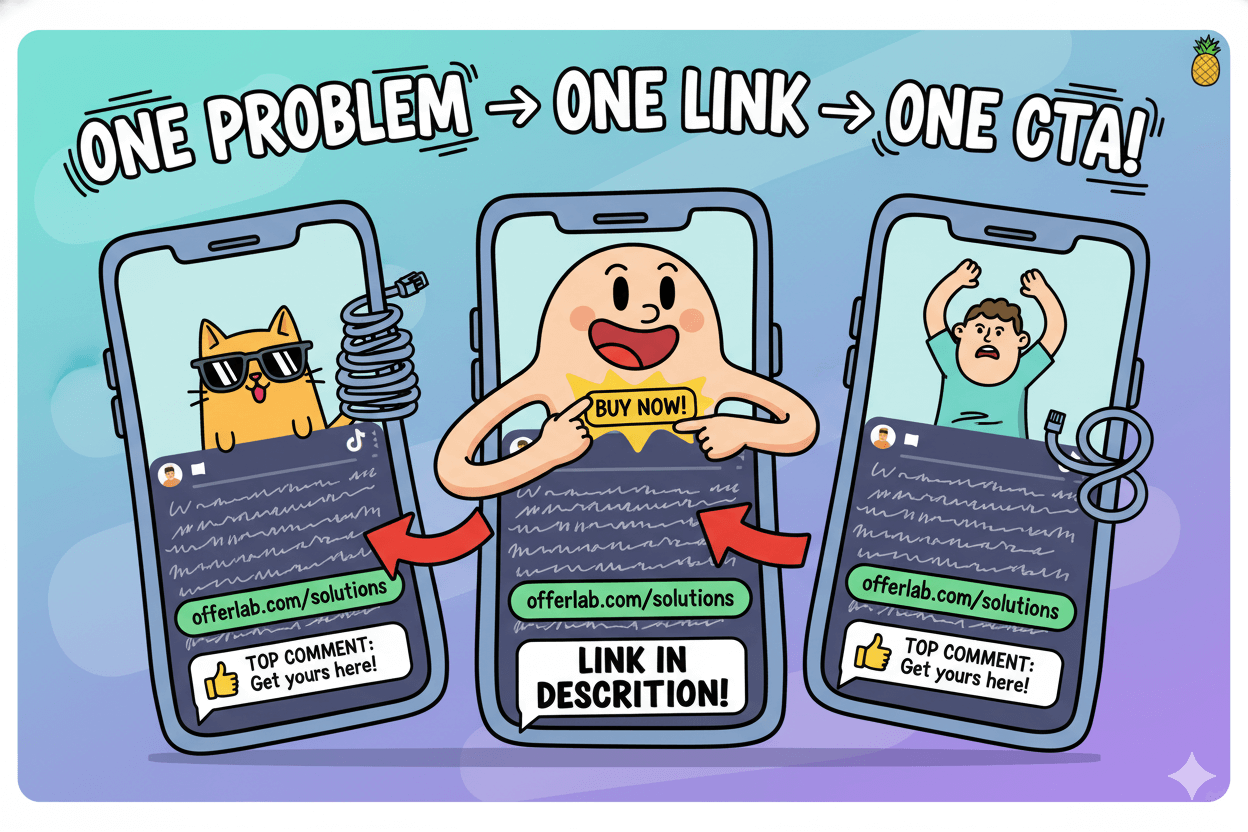
Do’s_and_don’ts
- Do place disclosures where people will see or hear them.
- Don’t hide disclosures or bury them after a “see more.” The FTC expects clear, proximate, simple language for any material connection.
Inbox Mini-Newsletter in a Day
Create a one-page signup (from your email tool) and promise “one useful pick per week.” Send your first email within 24 hours: one story, one tip, one affiliate link with a plain-English disclosure.
Even a micro-list can produce your first clicks because inbox attention is high and intent is clearer than in a “scroll.”
Beginner email guides recommend simple sequences, consistent cadence, and basic tracking to learn what earns opens and clicks. – Beehiiv Blog
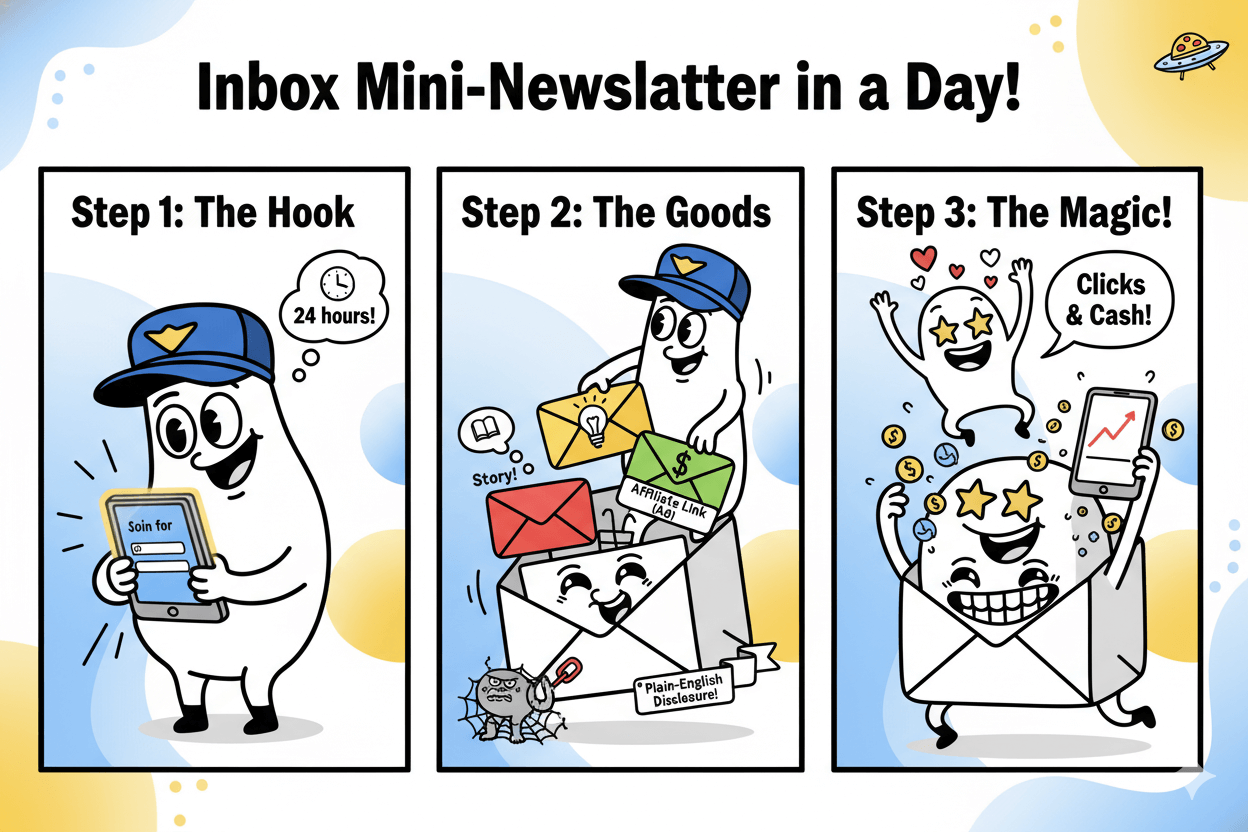
Forums, Guests, and Events Stack
Post one helpful answer in a niche forum or community this week. Offer a short, instructional reply and add your link with a disclosure when allowed.
Pitch one 10-minute guest spot to a small podcast or community livestream and mention the landing page verbally plus in the show notes; podcast notes and live workshops are legitimate places to share links or simple codes when relevant to the topic.
Close the loop by tracking which post or appearance drove clicks so you can prioritize that channel next week.
Myth_buster: You do not need money to start. Free channels plus consistent publishing can drive your first commission. Add paid traffic only after your EPC meets or beats your CPC.
Compliance note: Disclose clearly on every platform and in email. The FTC requires influencers and affiliates to make conspicuous disclosures of material connections; multiple formats—on-screen, spoken, and in text—are safer than one. Also avoid fake reviews or engagement.
Beginner ROI Math: EPC, CPC, and Conversion Rate
Scale only when EPC ≥ CPC—let math guard your budget.
Money follows math. When you know what a click is worth, you stop guessing and start steering. Three numbers do the heavy lifting for beginners: EPC (earnings per click), CPC (cost per click), and CR (conversion rate).
Learn these once and you can decide what to publish, where to promote, and when to scale.
EPC explained in one minute
EPC tells you how much money you earn per click on average. If you made $200 from 50 clicks, your EPC is $4.
It’s an average, not a promise for each click, so treat it like a speedometer for your funnel: the higher it runs, the easier everything else becomes.
CPC is the mirror image—what you pay per click when you buy traffic. Read EPC against CPC to see profit per click; if EPC trails CPC, you’re subsidizing the campaign. Keep both numbers visible in one place so decisions get simpler and faster.
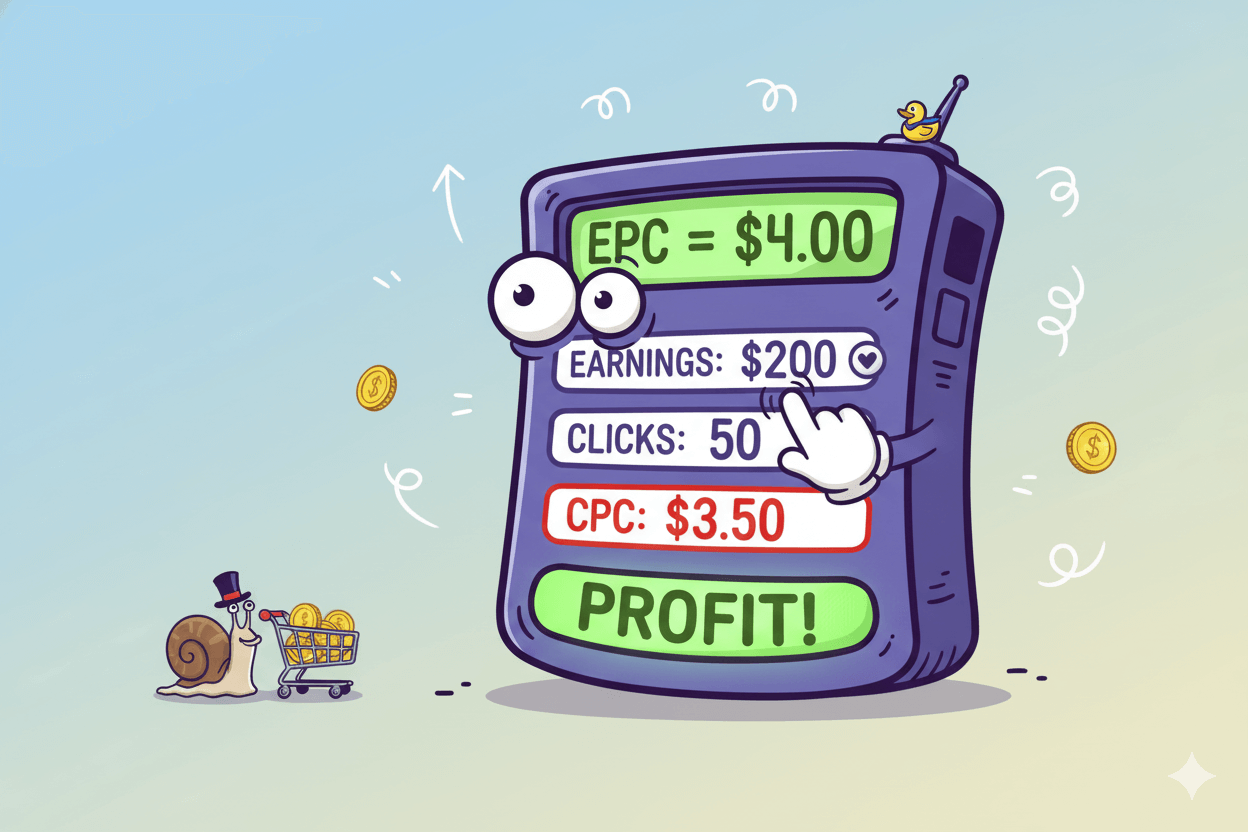
What “good” looks like at low spend
Use a cost-first rule: aim for EPC ≥ CPC before you add budget. That threshold protects you while you test hooks, creatives, and offers.
For directional expectations, recent roundups show beginner conversion rates around 1–3% across many niches, with outliers higher when intent and offer quality align. – RoundSky
If you want a single sanity number, a 2025 cross-industry estimate pegs average affiliate CR ≈ 1.20%. Treat this as a floor, not a ceiling; your traffic source, niche, and offer price will pull that number up or down.
Measure your own funnel weekly so you replace guesses with evidence.
micro_challenge: For the next seven days, publish five assets and record clicks and earnings nightly. Calculate EPC daily. Do not raise spend until EPC meets or beats CPC three days in a row.
ROI worksheet: 50 clicks to $100
- List costs for the test window: ad spend or promo boosts, creative tools, and any fixed fees.
- Track clicks from each post or placement.
- Compute EPC = earnings ÷ clicks. Example: $200 ÷ 50 clicks = $4 EPC.
- Compare to CPC. If you paid $1.50 per click, profit per click is ~$2.50 before fixed costs—good signal to scale. If CPC is $3 and EPC is $1, pause and fix the offer–audience match or landing flow.
- Check CR to spot where the leak lives. If clicks are healthy but sales lag, your CR is likely low; use the 1–3% range as a directional check while you improve message and fit. Re-run the worksheet weekly and keep all math in a single sheet so decisions compound.
Compliance reminder: Present ranges and examples as education, not promises. Benchmarks vary by niche, traffic source, and pricing.
OfferLab vs Category Staples for Starters
Choose by friction: clear fees, simple payouts, website-optional starts.
Choose by friction, not fame. What gets a beginner to first earnings is clear fees, fast visibility into payouts, and workflows that don’t require a big setup.
OfferLab leans into collaboration funnels and automatic split payouts, while many category staples optimize for massive marketplaces and broad program directories. Think in attributes you can verify at signup.
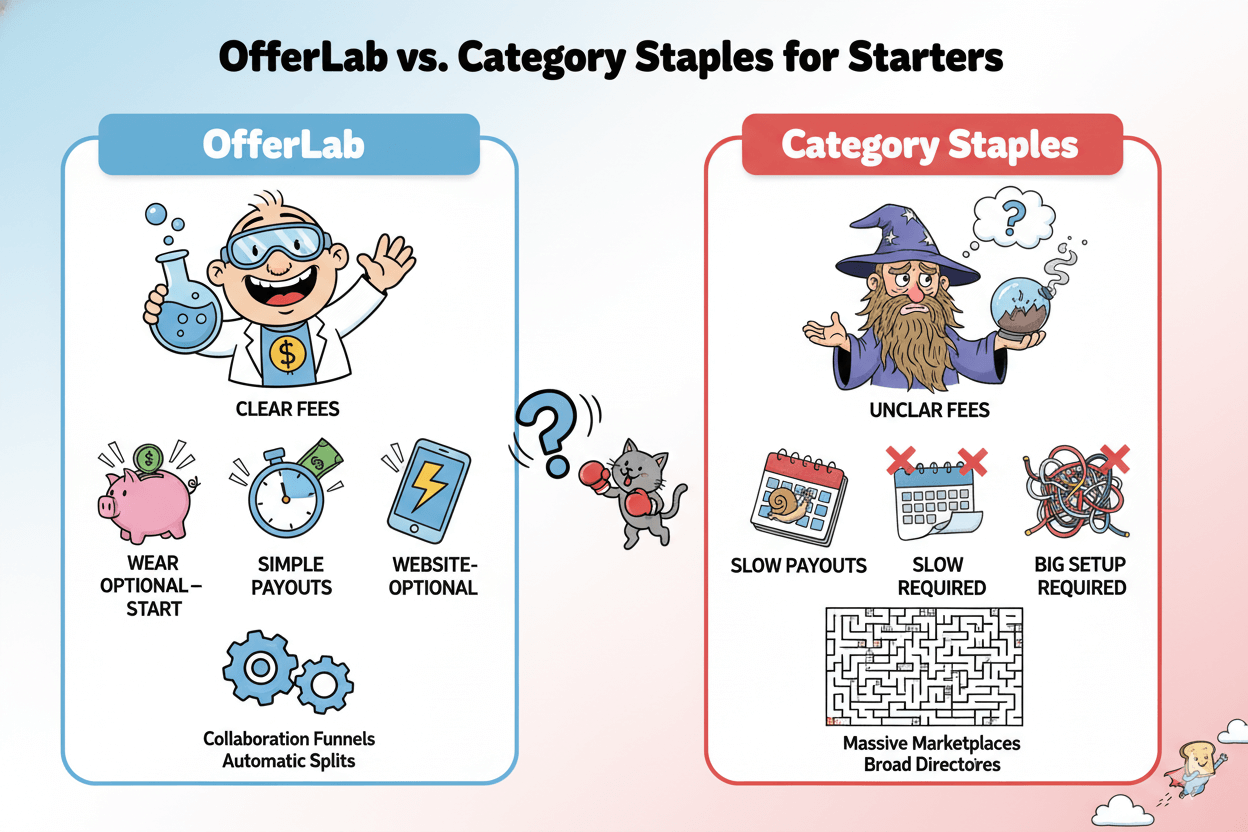
Fees, holds, and payout timing
OfferLab is free to join and takes a per-sale cut that the docs describe as a 7.5% platform fee plus ~3.5% processing, with commissions for affiliates held 30 days to cover refunds before withdrawal; sellers get instant Stripe payouts on their own offers.
The FAQ also lists withdrawal fees of $4.95 (US) and $1.50 + FX (non-US) once funds clear.
In practice, this means affiliates plan cash flow in four-week cohorts, while sellers can reinvest sooner. Date-stamp these facts in the article because policies can change.
By contrast, big “best programs” roundups emphasize variety, ease of application, and ecosystem tools.
They rarely show a single standardized hold period or one universal fee model because each network or merchant sets its own rules. That makes OfferLab’s single-document clarity attractive if you want less policy hunting on day one.
Beginner friction score: setup, assets, support
OfferLab’s flow is built around stacking other sellers’ offers into your funnel and letting the system split revenue at checkout, which removes manual tracking headaches for collabs.
Category lists from high-authority publishers highlight broad program access, but new affiliates must still assemble assets, choose tracking, and learn each program’s rules.
If your constraint is time, fewer moving parts often beats a larger catalog.
pro_tip: Before promoting any specific offer, check the commission rate, refund window, and the 30-day clearing policy so your EPC math reflects what you’ll actually receive and when.
Website-optional fit and tracking needs
Shopify’s beginner guides confirm you can start without a website using short-form video, social posts, and a simple newsletter.
Pair that with OfferLab’s link-level tracking and 30-day clearing to evaluate EPC vs CPC weekly; only scale when EPC meets or beats CPC.
Category listicles provide discovery, but your first $100 usually comes from one channel you can publish to consistently, not from the size of a directory.
Callout — before_after:
- Before: Comparing platforms by brand recognition and endless catalogs.
- After: Choosing by provable attributes: fee transparency, payout timing, setup friction, and website-optional workflows… then measuring EPC against your actual traffic cost.
Answering OfferLab Questions YOU Are Thinking About
From ‘good EPC’ to payouts—clarity you can ship with.
Short, useful answers you can act on today. Read, pick one move, and ship something this week.
EPC and ROI Quick Math
What is EPC and how do I use it?
EPC is your earnings per click. If you made $200 from 50 clicks, your EPC is $4. Use it beside CPC to judge profit per click. If EPC ≥ CPC, you’re on the right path and can test scaling.
What’s a good EPC for beginners?
Use a cost-first rule: aim for EPC that meets or beats your CPC. Ranges vary by niche, but this threshold protects your budget while you iterate creatives and offers.
What’s the average affiliate conversion rate?
Treat ~1–3% as a broad range, with a recent cross-industry estimate at ~1.20% in June 2025. Start there, then measure your own funnel weekly. – Pantero
No-Website Channels That Work
Can I start without a website?
Yes. Begin on channels you already use: short-form video, social posts, a simple newsletter, forums, guest spots, events, even small paid boosts. Add clear disclosures and trackable links so every click teaches you what to repeat.
What should I publish first?
Shopify’s 2025 guide lists eight website-optional moves: build a social following, start a newsletter, guest post, post to forums, start a podcast, test paid ads, host an event, start a community and leverage AI content helpers.
Pick one, ship three small pieces this week, then double down on the winner.
Beginner tip: Email works early because attention is calmer than the social scroll. Promise one useful pick per week, disclose near the link, and keep tracking simple.
OfferLab Facts in One Box
Is OfferLab free to join?
Yes. The official FAQ lists no monthly subscriptions or setup fees. Each sale includes a 7.5% platform fee and a ~3.5% merchant processing fee, plus applicable tax where required.
How do payouts work?
Sellers receive instant Stripe payouts on their own offers. Affiliate commissions enter a 30-day clearing window to cover refunds; after that, they’re withdrawable. The FAQ also notes withdrawal fees (for example, $4.95 per payout in the U.S.).
Who sets the commission rate?
The offer owner sets commissions. OfferLab’s docs describe how revenue splits at checkout follow those settings automatically.
Compliance note: Disclose material connections clearly on every platform and in email. Keep claims educational, not promises, and date any policy numbers you cite.
Your 7-Day Starter Plan: From Zero to First Clicks
Seven days, three tiny assets, one metric—EPC.
A week is enough to prove the model. Pick one channel you already use, one offer that fits your niche, and one number to watch: EPC.
Keep it lean, track every click, and recycle what works. By day seven you’ll know where the next ten days should go.
quick_win: One channel, one offer, one number. That focus speeds your first $100.
Pick Offers and Set Targets
Day 1–2. Shortlist 2–3 offers that match your audience’s problem. Confirm basics: commission rate, refund window, and any hold period so your math is real.
Set a first goal like “$1.50 EPC by 50 clicks” to judge fit fast. If your niche is new, anchor expectations with recent conversion benchmarks around ~1–3% across many programs, with one 2025 cross-industry estimate near 1.20%.
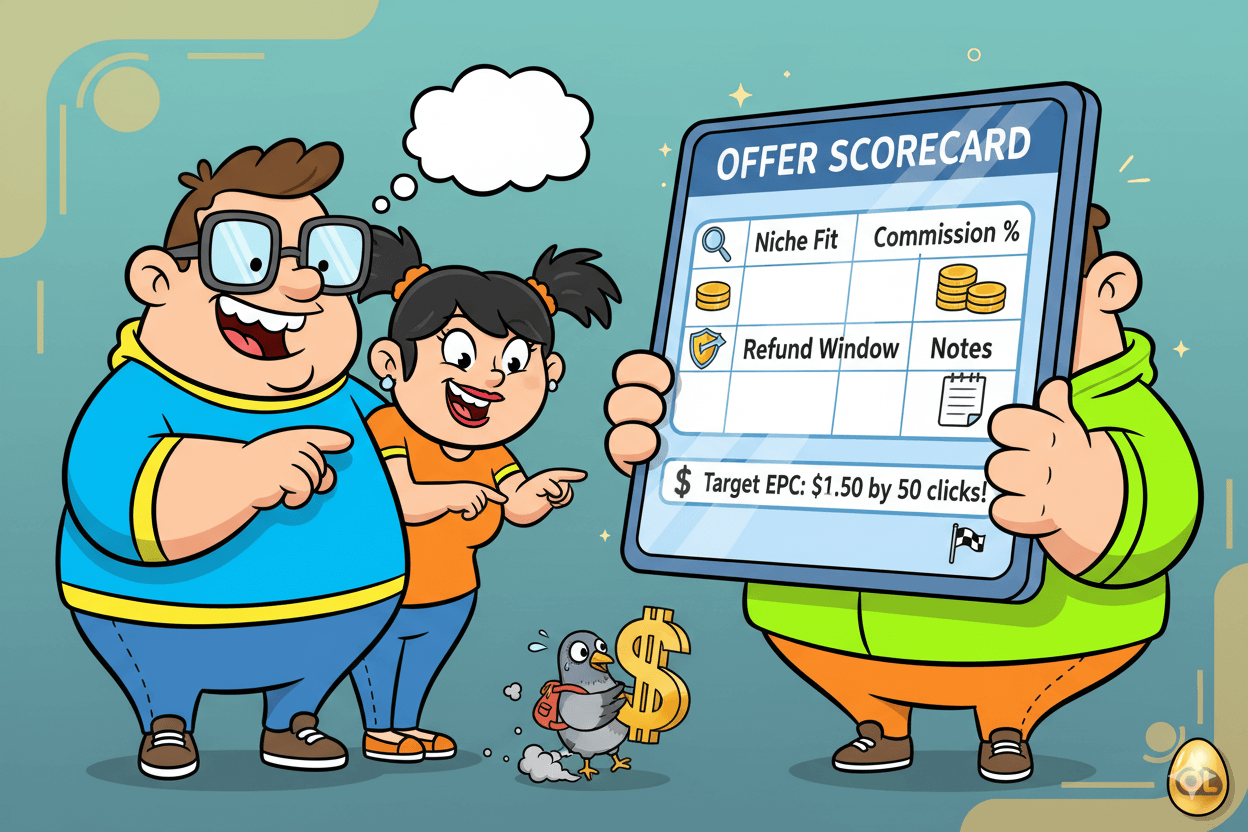
Publish, Pin, and Repurpose
Day 3–5. Ship three small pieces on the same theme: a short video, a social post, and a simple email.
Shopify’s 2025 guides list website-optional moves that work now: short-form content, newsletters, guest posts, forums, podcasts, small paid boosts, events, and AI helpers.
Use clear affiliate disclosures on every placement and put a trackable link where attention lives (profile, description, first comment, or email button). Repurpose the top performer twice to confirm signal.
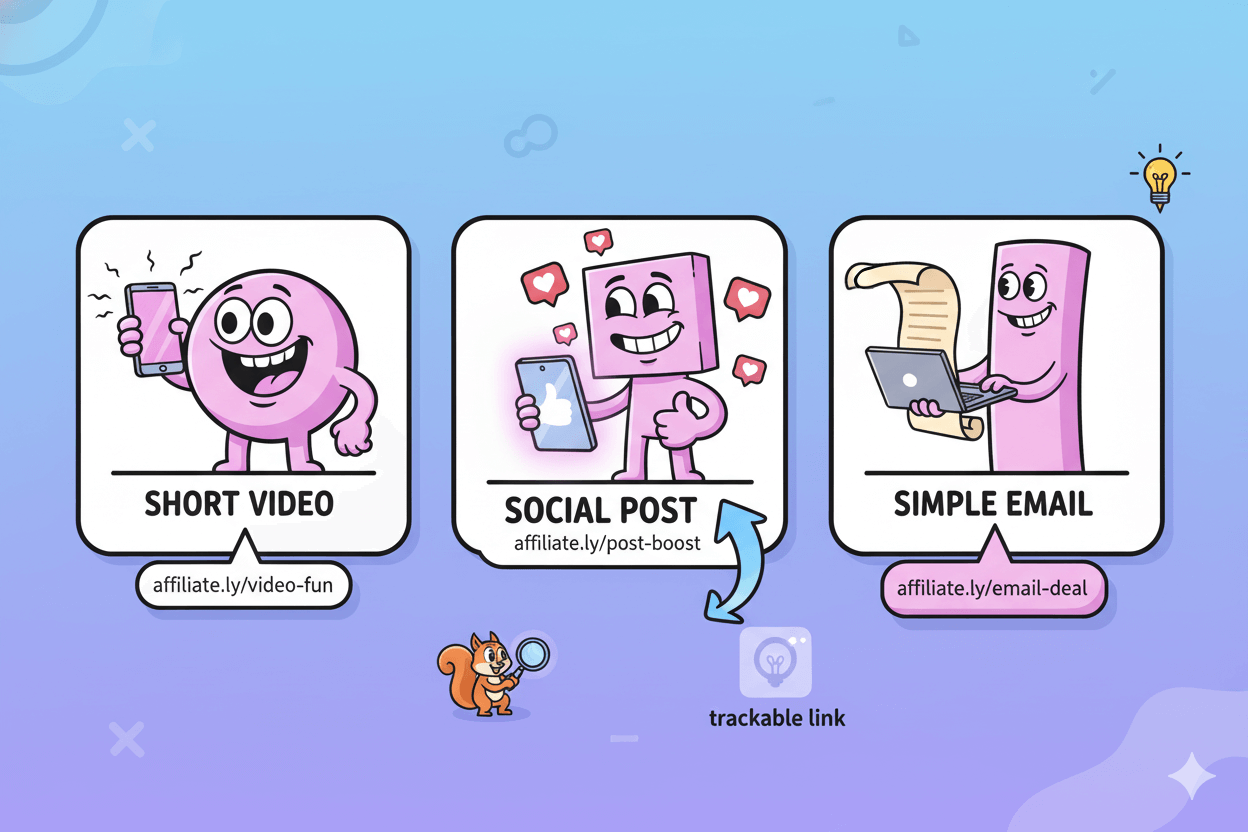
Read the Numbers: EPC, CR, ROI
Day 6–7. Open your sheet and do three lines of math.
- EPC = earnings ÷ clicks. Example: $200 ÷ 50 clicks = $4 EPC.
- Compare EPC to your CPC. The beginner-safe rule is EPC ≥ CPC before you scale.
- Sanity-check CR against recent ranges. Directionally, many programs cluster near 1–3%, with a 2025 cross-industry estimate around 1.20%—your niche and traffic source will move that number.
If EPC beats CPC over a 50-click sample, lean in: repeat the winning angle, double your output on that channel, and test one adjacent hook.
If EPC lags, pause spend, tighten the audience–offer match, adjust the landing copy, or try a higher-intent surface like email where conversions often outrun social.
pro_tip: Log every post, date, clicks, earnings, EPC, and notes. Patterns appear by week two… and patterns pay.
Compliance note: Disclose material connections clearly in each post and email. Keep examples educational, not promises. Benchmarks vary by niche, traffic, and offer quality; verify program terms before you publish.
Conclusion
Your path to a first $100 is simple: choose a platform with clear rules, pick one channel you already use, and measure every click.
OfferLab keeps the mechanics straightforward—free to join, instant payouts for sellers, and a 30-day clearing window for affiliate commissions before withdrawal—so you can focus on traffic and fit rather than setup headaches.
Note the FAQ’s update date and re-check fees and payout details at publish time.
You do not need a website to start. Publish short videos, social posts, or a one-page newsletter and place a clear disclosure next to your link.
These website-optional moves are current, beginner-friendly, and fast to execute; add a site later for authority and SEO once you’ve proven what works.
Let the numbers steer you. Track EPC and compare it to your traffic CPC—the practical threshold for beginners is EPC that meets or beats CPC before you scale spend.
Use a realistic baseline for conversion rate as a sense check; recent cross-industry estimates place average affiliate CR near 1.20%, with wide variation by niche and traffic quality.
Ranges are guidance, not guarantees, so keep weekly records and let your own data lead.
From here, run the 7-day loop: shortlist offers, ship three small assets, and review EPC vs CPC at week’s end. If EPC clears CPC, double-down on the winning angle and channel; if not, refine the offer–audience match and try again.
Always disclose material connections and cite the latest OfferLab policy details in your facts box to keep the article accurate and compliant.

OfferLab: One Channel, One Link, Real Results




